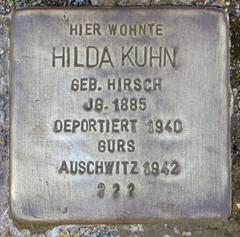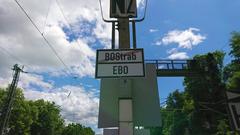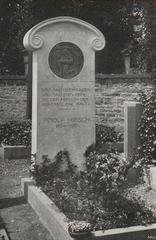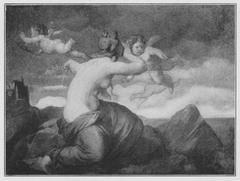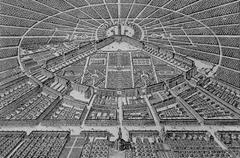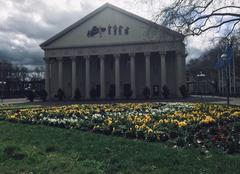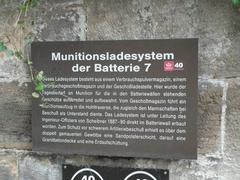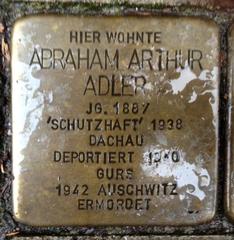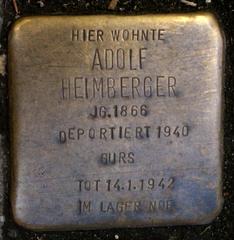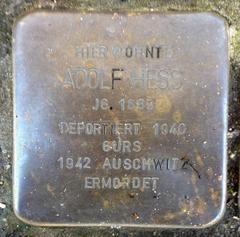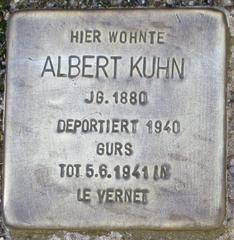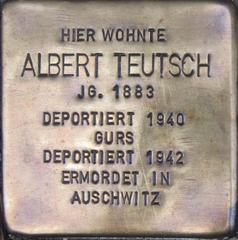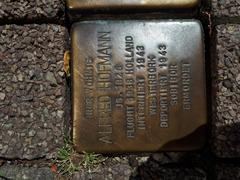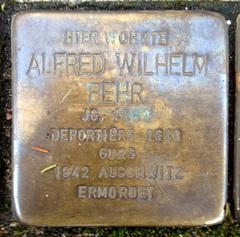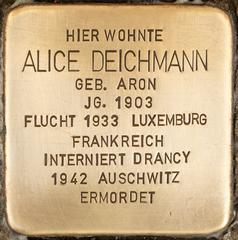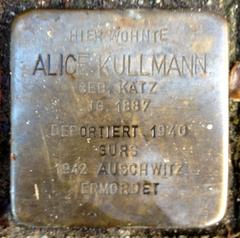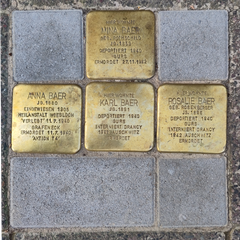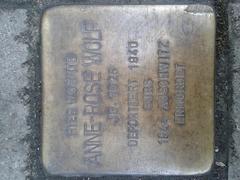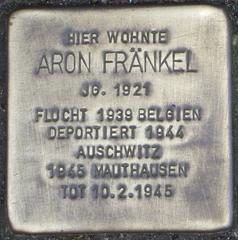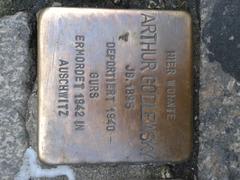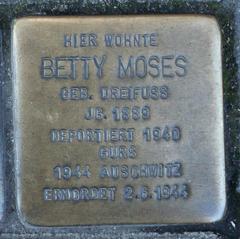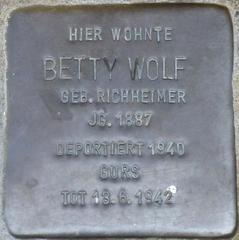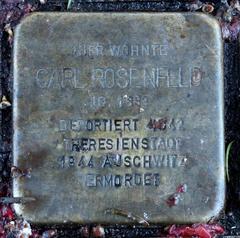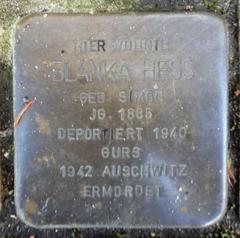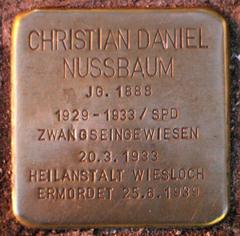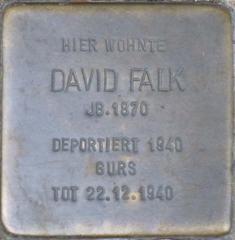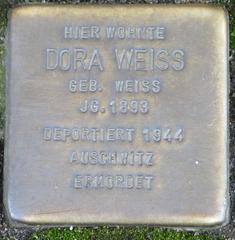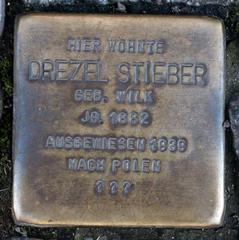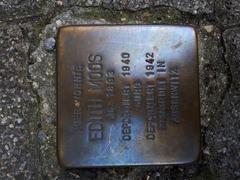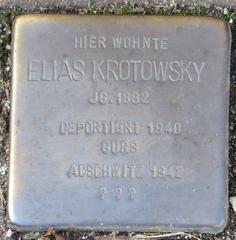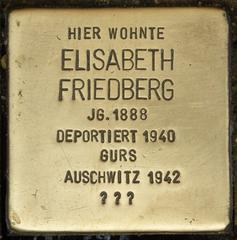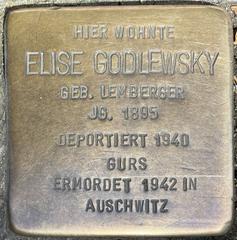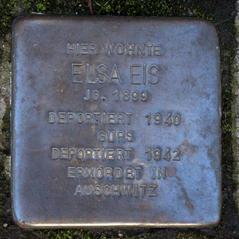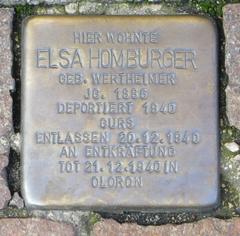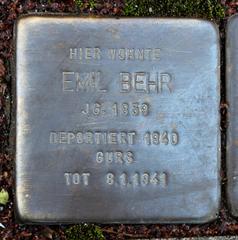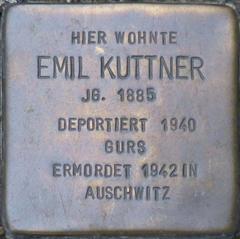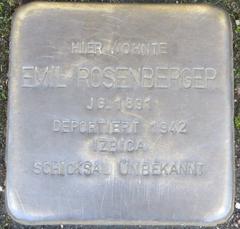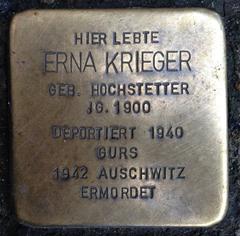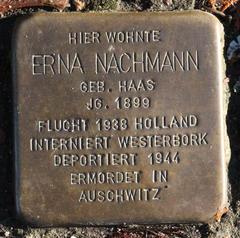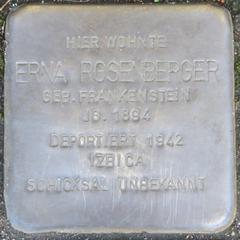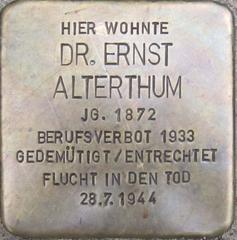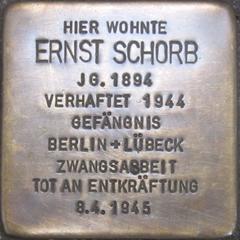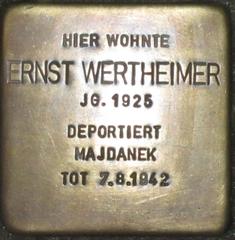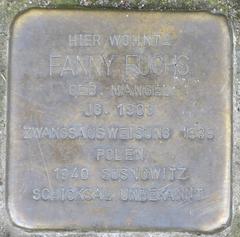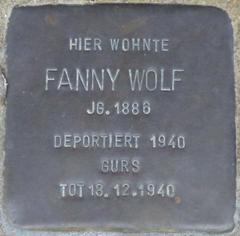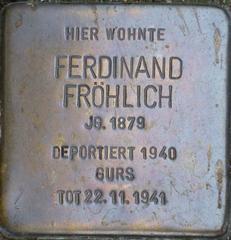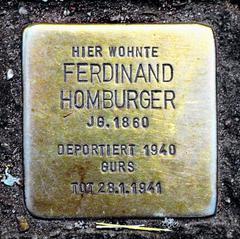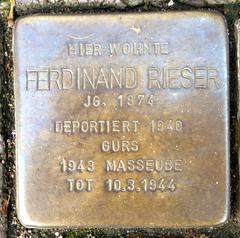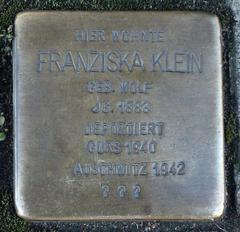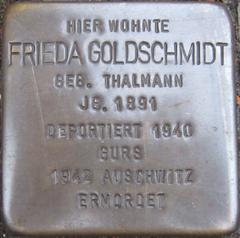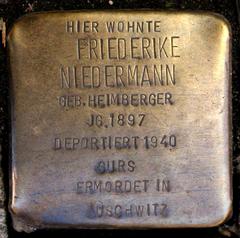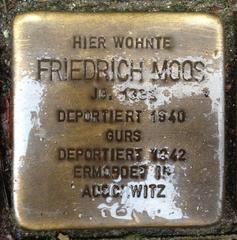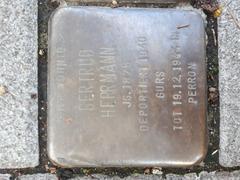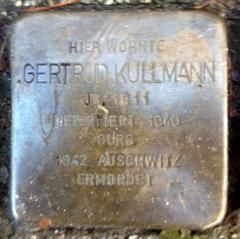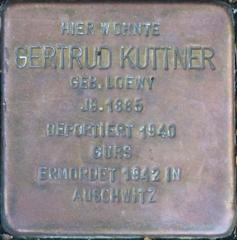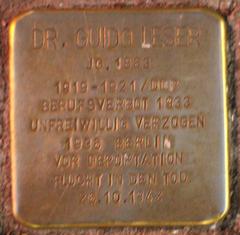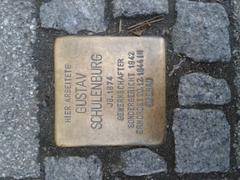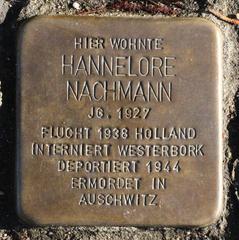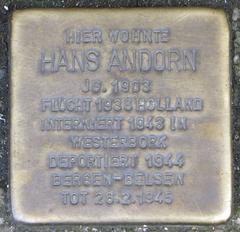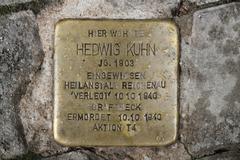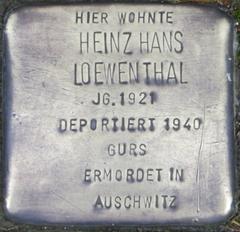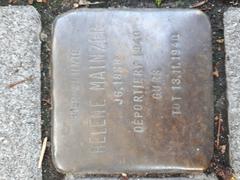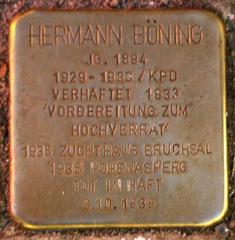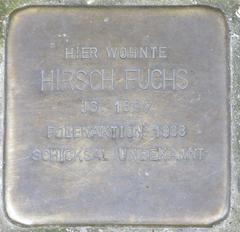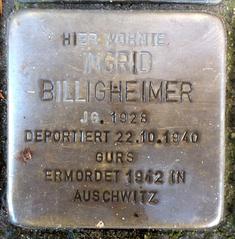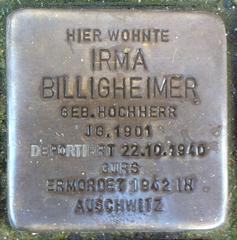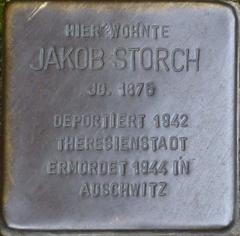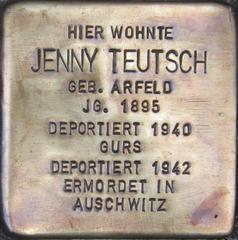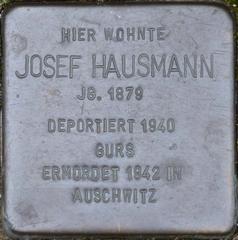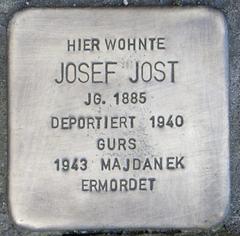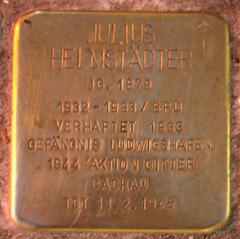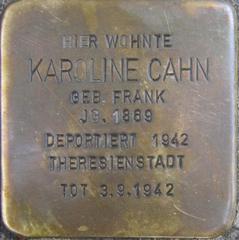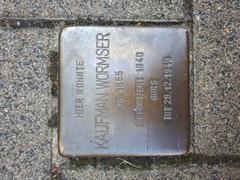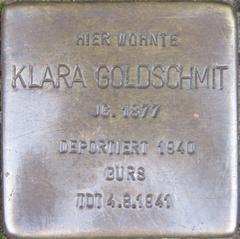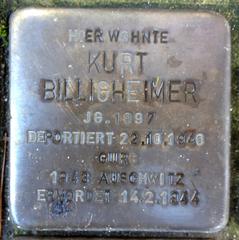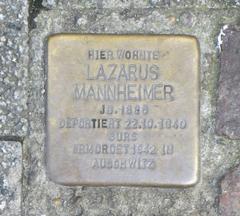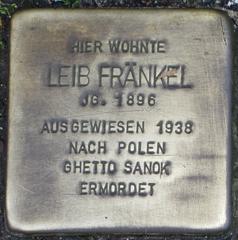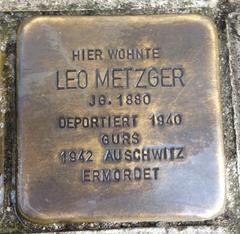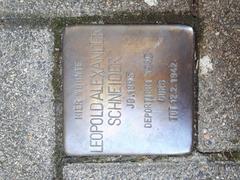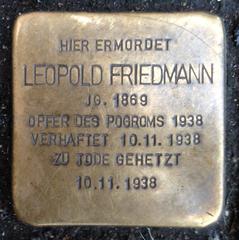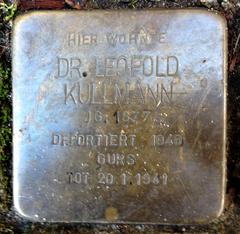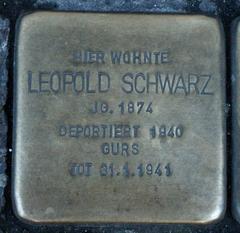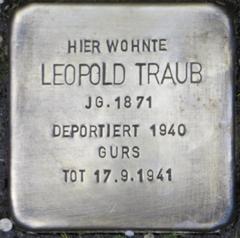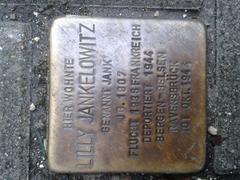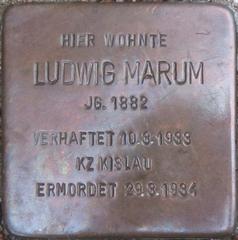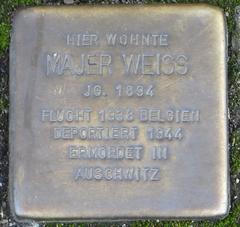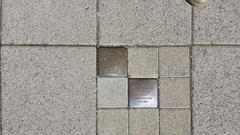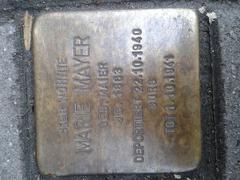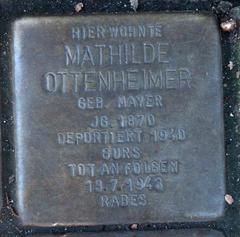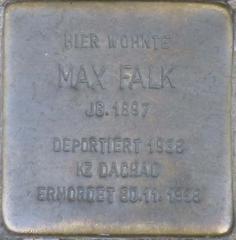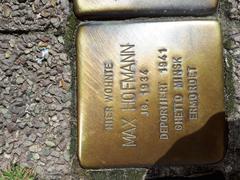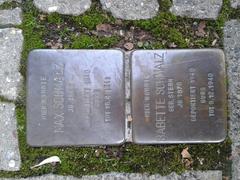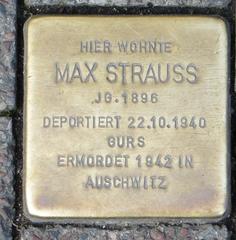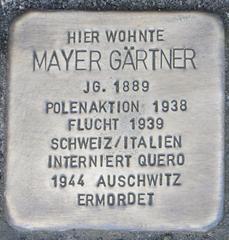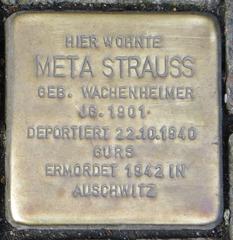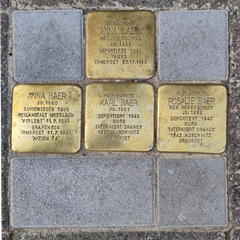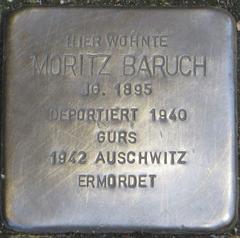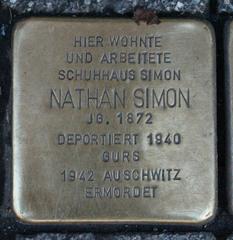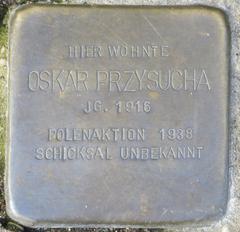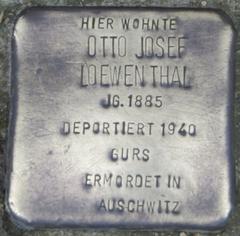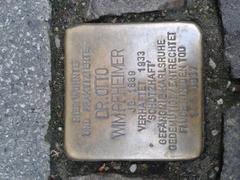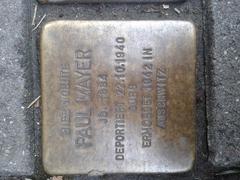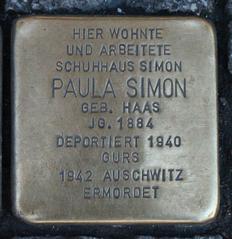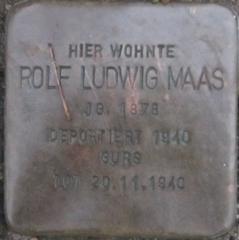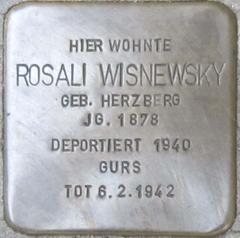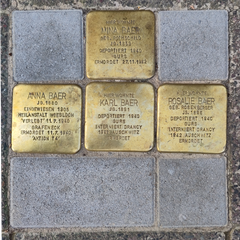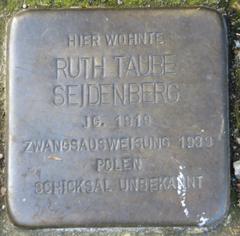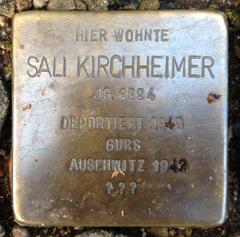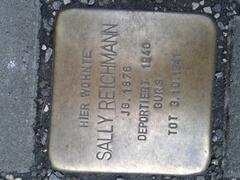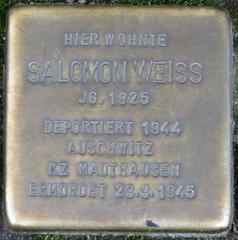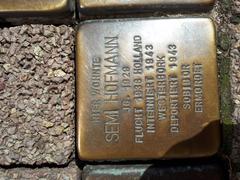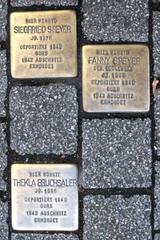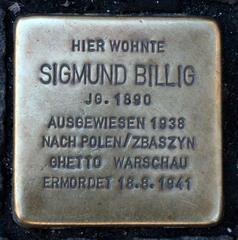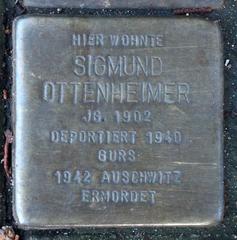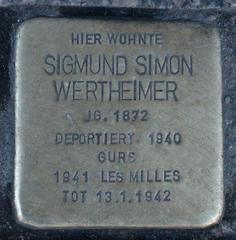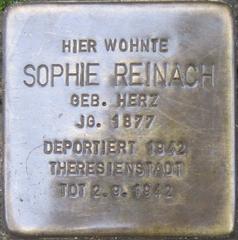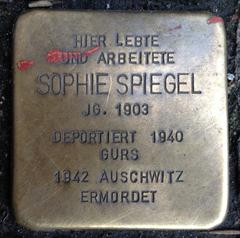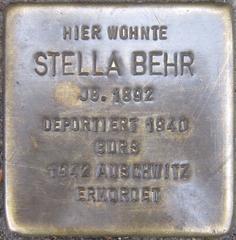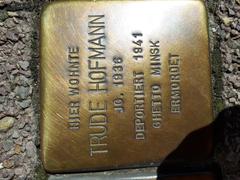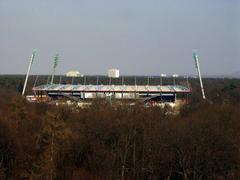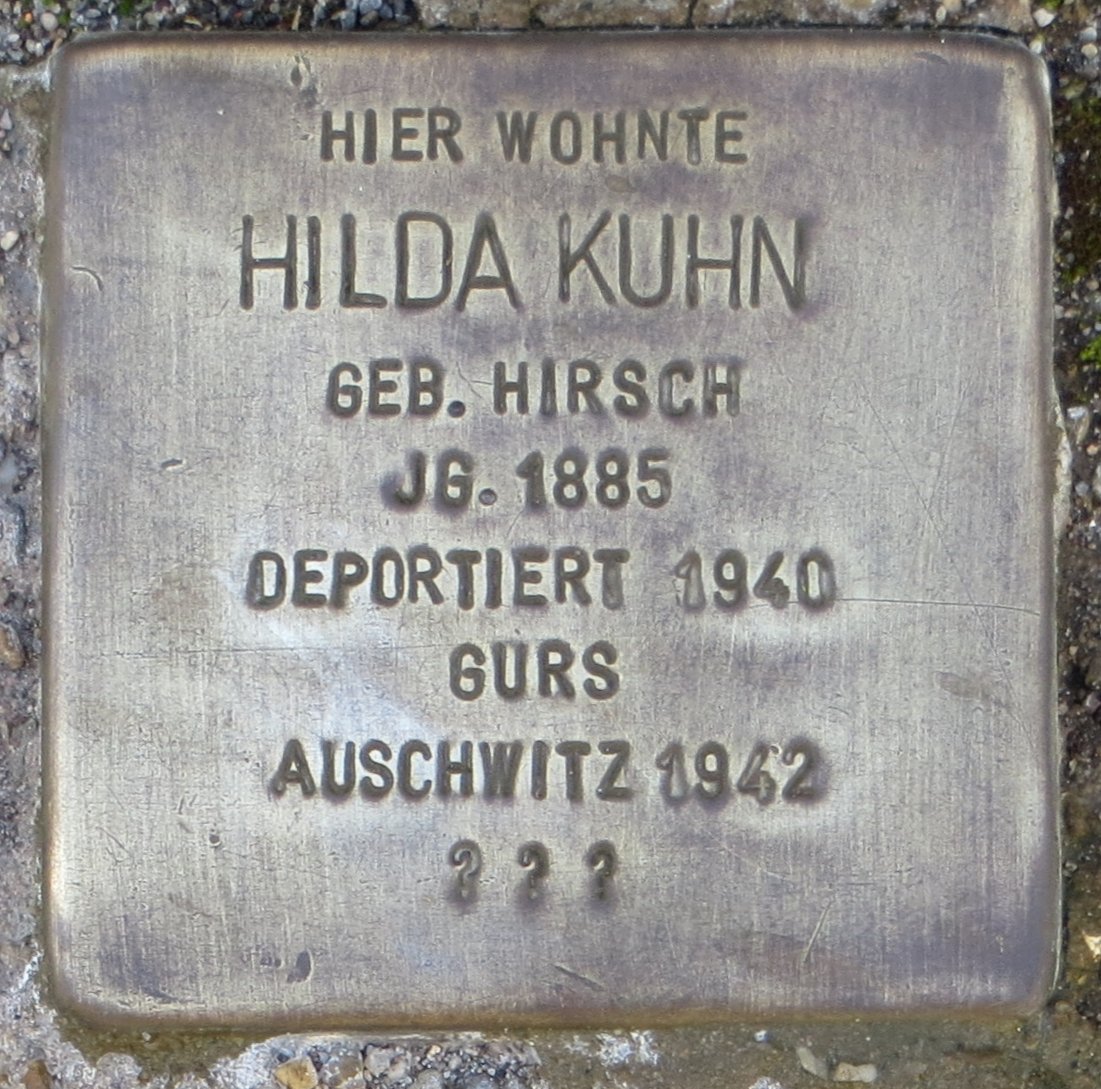
Stolperstein for Hilda Kuhn in Karlsruhe, Germany: Visiting Hours, Tickets, and Historical Significance
Date: 14/06/2025
Introduction
The Stolperstein dedicated to Hilda Kuhn in Karlsruhe stands as a poignant tribute to the memory of a Jewish resident persecuted during the Nazi era. Part of the wider Stolpersteine (“stumbling stones”) project initiated by artist Gunter Demnig, this small brass plaque is embedded in the public sidewalk in front of Hilda Kuhn’s last freely chosen residence at Klosestraße 38. The memorial not only honors Hilda Kuhn’s life but also serves as a powerful symbol of collective remembrance for the countless victims of Nazi persecution. Through its accessible location and integration into the city’s landscape, the Stolperstein invites all passersby to reflect on the enduring impact of intolerance and the importance of remembrance in public life (Stolpersteine Karlsruhe; Stadt Karlsruhe; Stolpersteine.eu).
Table of Contents
- Introduction
- Hilda Kuhn: Her Life and Legacy
- The Stolpersteine Project: Origins and Philosophy
- Significance of Stolpersteine in Karlsruhe
- Visiting the Stolperstein for Hilda Kuhn
- Community Engagement and Commemoration
- Frequently Asked Questions (FAQ)
- References and Further Reading
Hilda Kuhn: Her Life and Legacy
Hilda Kuhn was a Jewish resident of Karlsruhe whose life was irreversibly altered by the rise of the Nazi regime. While detailed family records are scarce, the Stolpersteine project and local historians have worked to reconstruct and preserve her story. Like many Karlsruhe Jews, the Kuhn family was integral to the city’s cultural and economic life before facing exclusion, persecution, and deportation under Nazi rule.
The Stolperstein for Hilda Kuhn, located at her last freely chosen address, is a tangible reminder of her individual story amidst the collective tragedy of the Holocaust. The act of commemorating her name and fate in the very street where she lived ensures that her memory—and those of countless others—is not lost to history (Stolpersteine Karlsruhe).
The Stolpersteine Project: Origins and Philosophy
The Stolpersteine project was initiated by Gunter Demnig in the early 1990s with the aim of integrating the memory of Nazi victims into everyday environments. Each Stolperstein is a 10 x 10 cm concrete block topped with a hand-engraved brass plate, typically inscribed with the victim’s name, birth year, fate, and, when known, the date and place of death (Stolpersteine.eu). These stones are placed at the last freely chosen residences or workplaces of the victims, making remembrance an everyday encounter.
The project’s name, “stumbling stone,” is both literal and metaphorical—inviting people to “stumble” upon stories that might otherwise remain hidden. The decentralized nature of the memorial transforms public spaces into living sites of history, emphasizing that remembrance is a shared, ongoing responsibility.
Significance of Stolpersteine in Karlsruhe
Karlsruhe began participating in the Stolpersteine project in 2005, and today the city is home to nearly 300 stones commemorating not only Jewish victims but also Sinti and Roma, political prisoners, and others persecuted by the Nazis (Stadt Karlsruhe). These memorials are carefully placed in neighborhoods throughout the city, each telling a unique and personal story.
Local historical societies, schools, and cultural organizations actively participate in research, funding, and educational programming related to the Stolpersteine. This community involvement ensures that each stone remains a site of active remembrance and dialogue, fostering empathy and understanding among new generations (Stolpersteine Karlsruhe).
Visiting the Stolperstein for Hilda Kuhn
Location and Access
- Address: Klosestraße 38, Karlsruhe, Germany
- Setting: The stone is embedded in the public sidewalk outside Hilda Kuhn’s last residence.
Visitors can find Hilda Kuhn’s Stolperstein using interactive online maps or the Stolpersteine Guide app, which provide location details, biographies, and photographs. The site is easily accessible by public transportation, with tram and bus stops nearby (Stadt Karlsruhe).
Visiting Hours and Admission
- Hours: The Stolperstein is accessible 24 hours a day, 7 days a week.
- Admission: No tickets or fees are required; the memorial is freely accessible at all times.
Accessibility
- The site is wheelchair-accessible, as it is located in a public sidewalk.
- Suitable for visitors of all ages; families and school groups are welcome.
Guided Tours and Educational Initiatives
- Local organizations and schools in Karlsruhe offer guided tours that provide historical context for the Stolpersteine, including Hilda Kuhn’s memorial. These tours are often led by historians or educators and may require advance booking (Stolpersteine Karlsruhe).
- The Stolpersteine Guide app offers self-guided walking routes and detailed information for independent visitors.
Nearby Historical Sites
- Karlsruhe Palace and Gardens: A major landmark offering insight into the city’s broader history.
- Karlsruhe Synagogue and Jewish Museum: Explore Jewish heritage and local narratives.
- Other Stolpersteine: Numerous other stones are located throughout Innenstadt, Weststadt, and Durlach.
Visitor Etiquette and Photography
- Approach the memorial with respect; quiet reflection is encouraged.
- Photography is allowed, but be mindful not to disturb residents or obstruct pathways.
- Bringing a soft cloth to polish the stone is welcomed as a symbolic act of remembrance.
Community Engagement and Commemoration
Community involvement is a cornerstone of the Stolpersteine project in Karlsruhe. Local groups and volunteers regularly clean and maintain the stones, organize commemorative ceremonies (such as on Holocaust Remembrance Day, 27 January), and support educational initiatives (Stolpersteine Karlsruhe; RK Karlsruhe). Sponsoring a Stolperstein is possible for individuals or organizations, usually costing around 120 euros.
Annual events often include readings, musical performances, and the laying of flowers or candles at the stones, fostering a living and participatory culture of remembrance.
Frequently Asked Questions (FAQ)
Q: Where is the Stolperstein for Hilda Kuhn located?
A: The stone is embedded in the sidewalk at Klosestraße 38, Karlsruhe, outside her last residence. Interactive maps and apps provide exact directions (Stadt Karlsruhe).
Q: Do I need tickets or pay an admission fee?
A: No, visiting Stolpersteine is free and there are no visiting hour restrictions.
Q: Is the site accessible for wheelchair users?
A: Yes, Stolpersteine are set flush into public sidewalks and are generally accessible.
Q: Are there guided tours available?
A: Yes, several local organizations and schools offer guided tours. Check local cultural and historical society websites for details.
Q: Can I participate in cleaning or commemorative events?
A: Yes, community members are encouraged to join in cleaning, ceremonies, and remembrance activities (RK Karlsruhe).
References and Further Reading
- Stolpersteine Karlsruhe
- Stadt Karlsruhe
- Stolpersteine.eu
- Stadtwiki Karlsruhe - Stolpersteine Klosestraße 38
- Karlsruhe Kulturdenkmale - Stolpersteine
- Gedenkbuch Karlsruhe
- Reservistenkameradschaft Karlsruhe
- ka-news.de - Stolpersteine in Karlsruhe
Final Thoughts
The Stolperstein for Hilda Kuhn in Karlsruhe is more than just a marker in the pavement—it is an invitation to pause, remember, and learn. Through its presence, the city honors those who suffered under Nazi persecution and encourages ongoing reflection on the importance of tolerance, dignity, and historical consciousness. By visiting, participating in commemorative activities, or simply pausing to read her name, each of us helps to ensure that the memory of Hilda Kuhn and all victims endures.
